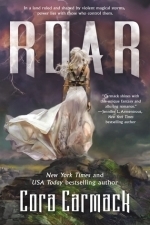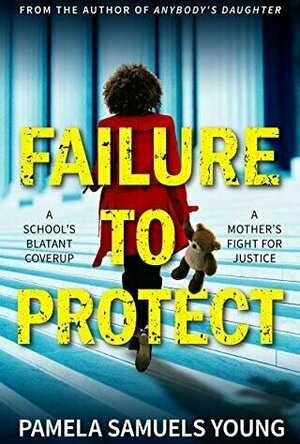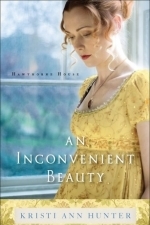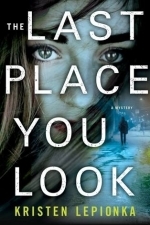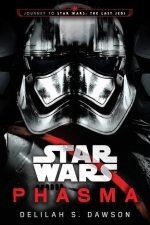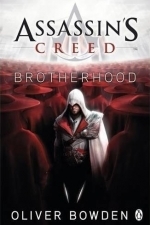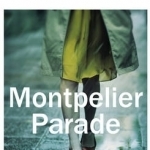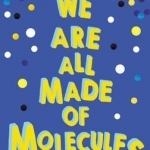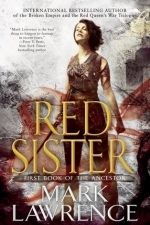Search
Search results
Roar started off slowly, but before long I was completely enamoured by the story. I personally love stories where elemental powers are part of the lore. Roar had a similar, yet unique take on those special abilities.
There are people in the world, called Stormlings, who are able to use their affinities to battle storms. In this land, those abilities relate to the storms that plague the kingdoms and towns. A Stormling may have an affinity for sky fire and be able to battle lightning - or they may have an affinity for tornados. Many battle storms not only to protect their lands but in the attempt to gain more affinities. If strong enough, a Stormling could take the heart of the storm (which manifests as a rock or gem) and use it to channel their abilities.
Aurora is the future Queen of Pavan, but she has yet to show any hint of the power needed to protect her people. As a result, her mother sets up an arranged marriage with the second born son of a neighboring kingdom. Not all is as it appears and Rora sets out to discover the truth. She soon learns that Stormlings are not the only people with the ability to fight storms and realizes that she must learn from these storm hunters so that she can avoid the path her life is currently on.
Aurora begins the book as a strong female character despite the fact that she is forced into a more meek, agreeable role in order to secure the marriage, so it may not seem that way. Although she has not been able to access the magic her blood should give her, she has not rested on her laurels. Rora occasionally trains with the guards in swordsmanship, reads whatever books she can get her hands on, is quite skilled in a number of languages and can chart her course by the stars. While she is not the typical heroine we might expect to save the day, she does grow over the course of the novel and will continue to do so in the second book.
As the majority of the book does not take place in the palace, we do not see much from the Locke family but I am incredibly intrigued by their familial relationships and the Prince himself. He is a dark, strong and imposing figure who is out to claim the throne - but may be less ruthless than he seems. While we do not such much of him, I expect there will be a lot more character development in the second book and I'm looking forward to that.
Locke, the storm hunter, was probably my favourite main character - although I loved the storm hunter crew as a whole. They had such unique personalities, tales and roles in the group and who wouldn't join a group of storm hunters? That would be amazing. Anyway, Locke started to remind me after a while of that over-protective Fae male personality that we see so often in Sarah J Maas' books (which can become tiresome) but his storm hunting prowess won me over. The author wrote each storm, its feeling and the hunters fighting it so brilliantly that those were definitely my favourite scenes in the novel.
This book seemed to set up the world, the magic system and the main characters well but leave plenty of room for development. We don't even see the character who is likely to be the villain until about 75% of the book is over. I'm intrigued by the villain's story and abilities, and can't wait to see where it goes in the second book.
The world is what drew me in and kept me wanting more, despite the cliches, tropes, and mid-level character development. The romance itself was probably the most off-putting because it was so unbelievable to me. It's not necessarily the chemistry and interactions between the two, but rather the way the author writes the male's point of view. To me, it just didn't sound like a guy was thinking those thoughts. Both of her main male characters became almost immediately obsessed with Aurora, wanted to protect her at any cost, thought about her all of the time, etc. As I mentioned before, that overprotective Fae male mentality. While it may seem sweet that they want to be protective, it borders on being too much (and sometimes crosses the line), which is not a healthy relationship dynamic to romanticize. I don't want to give more specific examples and spoil anything. This is not to say that men cannot be emotional and effusive because they can, but for me, just the way that it was done didn't read authentically. Those were the times I felt most drawn out of the narrative.
This book ends with the type of cliffhanger that most books should end on. You are not utterly destroyed and heartbroken that the author has ended this book with such big questions and yet the next is not due out for another year - you are completely in love with the story and the final scenes just make you excited to continue reading.
For me, the book was a little slow to start but once Rora goes on the journey with the storm hunters I think the book picks up a lot. I've seen a few people put the book down because they couldn't get into it and I would just recommend trying to push through a little longer and see if that changes for you. This is an upper-YA novel that I would recommend to ya/teen readers who enjoy fantasy and character growth in their novels.
There are people in the world, called Stormlings, who are able to use their affinities to battle storms. In this land, those abilities relate to the storms that plague the kingdoms and towns. A Stormling may have an affinity for sky fire and be able to battle lightning - or they may have an affinity for tornados. Many battle storms not only to protect their lands but in the attempt to gain more affinities. If strong enough, a Stormling could take the heart of the storm (which manifests as a rock or gem) and use it to channel their abilities.
Aurora is the future Queen of Pavan, but she has yet to show any hint of the power needed to protect her people. As a result, her mother sets up an arranged marriage with the second born son of a neighboring kingdom. Not all is as it appears and Rora sets out to discover the truth. She soon learns that Stormlings are not the only people with the ability to fight storms and realizes that she must learn from these storm hunters so that she can avoid the path her life is currently on.
Aurora begins the book as a strong female character despite the fact that she is forced into a more meek, agreeable role in order to secure the marriage, so it may not seem that way. Although she has not been able to access the magic her blood should give her, she has not rested on her laurels. Rora occasionally trains with the guards in swordsmanship, reads whatever books she can get her hands on, is quite skilled in a number of languages and can chart her course by the stars. While she is not the typical heroine we might expect to save the day, she does grow over the course of the novel and will continue to do so in the second book.
As the majority of the book does not take place in the palace, we do not see much from the Locke family but I am incredibly intrigued by their familial relationships and the Prince himself. He is a dark, strong and imposing figure who is out to claim the throne - but may be less ruthless than he seems. While we do not such much of him, I expect there will be a lot more character development in the second book and I'm looking forward to that.
Locke, the storm hunter, was probably my favourite main character - although I loved the storm hunter crew as a whole. They had such unique personalities, tales and roles in the group and who wouldn't join a group of storm hunters? That would be amazing. Anyway, Locke started to remind me after a while of that over-protective Fae male personality that we see so often in Sarah J Maas' books (which can become tiresome) but his storm hunting prowess won me over. The author wrote each storm, its feeling and the hunters fighting it so brilliantly that those were definitely my favourite scenes in the novel.
This book seemed to set up the world, the magic system and the main characters well but leave plenty of room for development. We don't even see the character who is likely to be the villain until about 75% of the book is over. I'm intrigued by the villain's story and abilities, and can't wait to see where it goes in the second book.
The world is what drew me in and kept me wanting more, despite the cliches, tropes, and mid-level character development. The romance itself was probably the most off-putting because it was so unbelievable to me. It's not necessarily the chemistry and interactions between the two, but rather the way the author writes the male's point of view. To me, it just didn't sound like a guy was thinking those thoughts. Both of her main male characters became almost immediately obsessed with Aurora, wanted to protect her at any cost, thought about her all of the time, etc. As I mentioned before, that overprotective Fae male mentality. While it may seem sweet that they want to be protective, it borders on being too much (and sometimes crosses the line), which is not a healthy relationship dynamic to romanticize. I don't want to give more specific examples and spoil anything. This is not to say that men cannot be emotional and effusive because they can, but for me, just the way that it was done didn't read authentically. Those were the times I felt most drawn out of the narrative.
This book ends with the type of cliffhanger that most books should end on. You are not utterly destroyed and heartbroken that the author has ended this book with such big questions and yet the next is not due out for another year - you are completely in love with the story and the final scenes just make you excited to continue reading.
For me, the book was a little slow to start but once Rora goes on the journey with the storm hunters I think the book picks up a lot. I've seen a few people put the book down because they couldn't get into it and I would just recommend trying to push through a little longer and see if that changes for you. This is an upper-YA novel that I would recommend to ya/teen readers who enjoy fantasy and character growth in their novels.
Jayme (18 KP) rated Underwater in Books
Mar 28, 2018
Plot (1 more)
Emotion
Contains spoilers, click to show
Marisa Reichardt’s debut novel Underwater is a compelling account of a teenage girl’s struggles with agoraphobia caused by a traumatic shooting taking place in her high school. The book intended for a young adult audience follows Morgan as as she tries to cope with several adversities in her life, primarily the fear of leaving her apartment. Morgan was content with wearing the same pajamas everyday while she did her schoolwork online and ate grilled cheese for lunch until a boy her age named Evan moved in next door. Evan showed up on Morgan’s door step smelling like the ocean, reminding her of summer and everything she missed outdoors. With help from Evan, her psychiatrist, her mom, and her little brother Ben, Morgan is able to finally confront her fears and take necessary steps toward recovery.
I found myself connecting to Morgan more than any other character within the book, and that connection began early on in her description of the day her younger brother was born.
"I think of Ben on the day he was born, all chubby and pink and bald. … I think of the newborn Ben next to my mom’s hospital bed and rocking him under dim lights while he slept in my arms. I fall asleep to the feeling of a love I never knew until my brother got here."
Being the youngest in my family and having no experience with anyone I knew having children, I was especially excited when my only sister got pregnant with her first child. I sat in an uncomfortable chair across the room from my sister’s hospital bed for thirteen hours while she was in labor. When she was finally ready to push, I stood at her side giving words of encouragement, and she even gave me the honor of cutting my nephew’s umbilical cord. I remember the warmth of my tears as I heard my nephew cry out, sucking in his first breaths of air. I left the hospital shortly after his delivery, allowing my sister to get some rest. I returned a few hours later and held my tiny nephew in my arms for the first time. I love plenty of people in my life, but it wasn’t until I watched my newborn nephew as he slept swaddled in the hospital-issued blanket that I fully understood the depths of the love I was capable of producing. The astonishment I felt holding my precious nephew can be compared to the feelings Morgan had toward her brother the day he was born.
What I found to be most fascinating about this book is the way the author tackles the problem of school shootings in a way that humanizes the shooter and his victims. Instead of making the shooter out to be a merciless attacker, he was demonstrated as a victim of neglect among his peers who deserves forgiveness for his mistakes. There have been one hundred and seventy-four school shootings in America since the year 2003. School shootings are a recurring issue in our society.
"Before Aaron’s Facebook was disabled, news outlets released photographs from his profile. They found the worst ones. The ones that painted the picture of a kid who was angry and alone. They interviewed neighbors who said Aaron spent weekends tinkering in the garage. His mom revealed Aaron had been in therapy since middle school. His dad revealed he kept guns in the house. For protection. From the world. Not from his son. Those were guns Aaron brought to school onOctober fifteenth. … And the only person who could give us answers, who could tell us why, was gone."
The media is quick to make the shooter out to be a monster instead of acknowledging the idea that people make drastic decisions, like one of shooting up a school, because they have no one to turn to.
Other personal accounts of shootings have been written, but there is nothing like this fictional demonstration of the aftereffects of such occurrences. Misty Bernell, the mother of a student killed in the Columbine High School shooting taking place in 1999, wrote the book She Said Yes: The Unlikely Martydom of Cassie Bernall as a way of commemorating her daughter and spreading awareness of the lives lost in the tragic massacre. Reichardt manages to establish a point of view that allows readers to show empathy toward a victim in the shooting the same way Bernell does without downplaying the internal struggles Aaron, the shooter in the novel, may have been experiencing.
The successful manner in which Reichardt explores a real-time societal issue from a unique perspective provides enough grounds for me to recommend the book. However, I was also able to find many characteristics that made me feel invested in the well-being of the each of the characters within the novel. Morgan works especially hard to go outside in order to see her brother perform in his kindergarten play, the psychiatrist meets with Morgan for free because the psychiatrist wanted Morgan to know she was being heard, Evan offering his old prepaid cell phone to Morgan so they could send text messages to communicate the problems Morgan was too afraid to talk about out loud, and the way Morgan’s mother compromises with Morgan and attempts to understand her feelings. Each character demonstrates selflessness and unconditional love while maneuvering through a situation where love and support are crucial to the mental health of everyone involved. Reading about people who truly care about each other and work to build each other up in a difficult time instead of worrying only of themselves is refreshing.
I found myself connecting to Morgan more than any other character within the book, and that connection began early on in her description of the day her younger brother was born.
"I think of Ben on the day he was born, all chubby and pink and bald. … I think of the newborn Ben next to my mom’s hospital bed and rocking him under dim lights while he slept in my arms. I fall asleep to the feeling of a love I never knew until my brother got here."
Being the youngest in my family and having no experience with anyone I knew having children, I was especially excited when my only sister got pregnant with her first child. I sat in an uncomfortable chair across the room from my sister’s hospital bed for thirteen hours while she was in labor. When she was finally ready to push, I stood at her side giving words of encouragement, and she even gave me the honor of cutting my nephew’s umbilical cord. I remember the warmth of my tears as I heard my nephew cry out, sucking in his first breaths of air. I left the hospital shortly after his delivery, allowing my sister to get some rest. I returned a few hours later and held my tiny nephew in my arms for the first time. I love plenty of people in my life, but it wasn’t until I watched my newborn nephew as he slept swaddled in the hospital-issued blanket that I fully understood the depths of the love I was capable of producing. The astonishment I felt holding my precious nephew can be compared to the feelings Morgan had toward her brother the day he was born.
What I found to be most fascinating about this book is the way the author tackles the problem of school shootings in a way that humanizes the shooter and his victims. Instead of making the shooter out to be a merciless attacker, he was demonstrated as a victim of neglect among his peers who deserves forgiveness for his mistakes. There have been one hundred and seventy-four school shootings in America since the year 2003. School shootings are a recurring issue in our society.
"Before Aaron’s Facebook was disabled, news outlets released photographs from his profile. They found the worst ones. The ones that painted the picture of a kid who was angry and alone. They interviewed neighbors who said Aaron spent weekends tinkering in the garage. His mom revealed Aaron had been in therapy since middle school. His dad revealed he kept guns in the house. For protection. From the world. Not from his son. Those were guns Aaron brought to school onOctober fifteenth. … And the only person who could give us answers, who could tell us why, was gone."
The media is quick to make the shooter out to be a monster instead of acknowledging the idea that people make drastic decisions, like one of shooting up a school, because they have no one to turn to.
Other personal accounts of shootings have been written, but there is nothing like this fictional demonstration of the aftereffects of such occurrences. Misty Bernell, the mother of a student killed in the Columbine High School shooting taking place in 1999, wrote the book She Said Yes: The Unlikely Martydom of Cassie Bernall as a way of commemorating her daughter and spreading awareness of the lives lost in the tragic massacre. Reichardt manages to establish a point of view that allows readers to show empathy toward a victim in the shooting the same way Bernell does without downplaying the internal struggles Aaron, the shooter in the novel, may have been experiencing.
The successful manner in which Reichardt explores a real-time societal issue from a unique perspective provides enough grounds for me to recommend the book. However, I was also able to find many characteristics that made me feel invested in the well-being of the each of the characters within the novel. Morgan works especially hard to go outside in order to see her brother perform in his kindergarten play, the psychiatrist meets with Morgan for free because the psychiatrist wanted Morgan to know she was being heard, Evan offering his old prepaid cell phone to Morgan so they could send text messages to communicate the problems Morgan was too afraid to talk about out loud, and the way Morgan’s mother compromises with Morgan and attempts to understand her feelings. Each character demonstrates selflessness and unconditional love while maneuvering through a situation where love and support are crucial to the mental health of everyone involved. Reading about people who truly care about each other and work to build each other up in a difficult time instead of worrying only of themselves is refreshing.
Heather Cranmer (2721 KP) rated Failure to Protect (Dre Thomas & Angela Evans #4) in Books
Nov 12, 2019
I don't normally read legal thrillers, but there was something about Failure to Protect by Pamela Samuels Young that drew me in. I think it's because I was bullied as a child, but mostly because I'm a mom now. My oldest son has high functioning Autism and ADHD. He was bullied one year in school, and his school seemed to not do anything about it. Failure to Protect was a very emotional read, and I'm really glad I decided to give it a try.
The plot for Failure to Protect was solid. Nine-year-old Bailey Lewis is constantly being bullied at her school. When something major happens, Bailey's mother, Erika, decides to sue the elementary school. However, the principal, Darcella, is more concerned with keeping the school's good record intact instead of worrying about bullied students. The principal will do whatever it takes to make sure her school's stellar reputation doesn't get soiled even if it means doing some bullying herself.
Pamela Samuels Young did such a stellar job with the world building. Her knowledge of the court process and justice system is fantastic. Young is an attorney, and it's obvious she knows her stuff. Unfortunately, the subject of bullying in schools is all too real, and sadly, many schools are more worried about their reputation and all the paperwork and time a bullying case would take than actually caring about a bullied student. This fiction novel reads like a true story. There are a few plot twists which make this book even more interesting! Failure to Protect also answered every question I had. There's no speculation in Failure to Protect, and there's also no cliffhangers. This book is part of a series, but it's the first book I've read in the series, and I feel like it works as a standalone.
The pacing in Failure to Protect is done perfectly. Every single paragraph, and every single chapter flowed smoothly into the next. Not once did I want to put this book down. It had my attention throughout! I was also a fan of the short chapters which I felt helped with the pacing.
The best thing about Failure to Protect, besides everything, were the characters. Each character had such a unique personality which really helped them to feel like a real person rather than just a character in a novel. I loved little Bailey, and I just wanted to hug her and let her know that I'd protect her against her bully. It was heartbreaking reading about all she went through in her young life from losing her father not too long ago to being relentlessly bullied in school and online. I also felt horrible for her mother Erika. She also went through two horrible tragedies including one a parent should never have to go through. I was constantly in her corner, and I kept rooting for her throughout the whole bullying ordeal with the school. Erika felt like what happened to Bailey was mostly her fault, and I wanted to tell Erika that sometimes it's not easy to know everything about our children. Dre was my favorite character. I enjoyed his thought process and how passionate he was about everything. It was obvious how much he loved his goddaughter Bailey. I loved how Angela grew as a character when it came to her relationship with Erika. At first, she wasn't big on Erika, but it was obvious how much she did end up caring for her. Angela and Jenny were both fantastic attorneys, and I loved how they were willing to dedicate all their time and knowledge for Bailey's case. Darcella, the principal, was such a horrible person. Young did a fantastic job at creating Darcella to be the antagonist. So many times I was so angry with Darcella. I wanted to just shake her and ask her why she didn't do anything for Bailey. Darcella does explain why she decided to overlook the bullying, but I just wanted to know why she bothered to work in a profession dealing with children if she didn't have any empathy. I was so annoyed with Darcella. I was also annoyed with Ethan Landers, Darcella's attorney. I know he was just doing his job at the end of the day, but it wasn't easy to read about how he could just side with the enemy. Zola, Bailey's teacher, was also an interesting character. She was so conflicted about doing the right thing, and I liked reading about why she chose to do what she did. Apache, Dre's best friend, was a minor character in Failure to Protect, but he gets a mention because I loved his scenes. He was such a character, and I loved how comical he was especially when it came to helping out Dre.
Trigger warnings in Failure to Protect include bullying, racism, sexual situations (although not too graphic), suicide, death, lying, alcohol, mentions of past drug use and selling, profanity, and mentions of violence.
All in all, Failure to Protect is an emotionally well written novel. It would make a fantastic Lifetime movie - at least that's what I kept thinking whilst reading it. The story line is something that unfortunately is so commonplace in a lot of schools. I would definitely recommend Failure to Protect by Pamela Samuels Young to those aged 18+. I think this is a book that everyone should read and can relate to on at least some level. If you do decide to read Failure to Protect (which you should), please know that you'll feel a vast range of emotions!
--
(A special thank you to Pamela Samuels Young for providing me with an eBook of Failure to Protect in exchange for an honest and unbiased review.)
The plot for Failure to Protect was solid. Nine-year-old Bailey Lewis is constantly being bullied at her school. When something major happens, Bailey's mother, Erika, decides to sue the elementary school. However, the principal, Darcella, is more concerned with keeping the school's good record intact instead of worrying about bullied students. The principal will do whatever it takes to make sure her school's stellar reputation doesn't get soiled even if it means doing some bullying herself.
Pamela Samuels Young did such a stellar job with the world building. Her knowledge of the court process and justice system is fantastic. Young is an attorney, and it's obvious she knows her stuff. Unfortunately, the subject of bullying in schools is all too real, and sadly, many schools are more worried about their reputation and all the paperwork and time a bullying case would take than actually caring about a bullied student. This fiction novel reads like a true story. There are a few plot twists which make this book even more interesting! Failure to Protect also answered every question I had. There's no speculation in Failure to Protect, and there's also no cliffhangers. This book is part of a series, but it's the first book I've read in the series, and I feel like it works as a standalone.
The pacing in Failure to Protect is done perfectly. Every single paragraph, and every single chapter flowed smoothly into the next. Not once did I want to put this book down. It had my attention throughout! I was also a fan of the short chapters which I felt helped with the pacing.
The best thing about Failure to Protect, besides everything, were the characters. Each character had such a unique personality which really helped them to feel like a real person rather than just a character in a novel. I loved little Bailey, and I just wanted to hug her and let her know that I'd protect her against her bully. It was heartbreaking reading about all she went through in her young life from losing her father not too long ago to being relentlessly bullied in school and online. I also felt horrible for her mother Erika. She also went through two horrible tragedies including one a parent should never have to go through. I was constantly in her corner, and I kept rooting for her throughout the whole bullying ordeal with the school. Erika felt like what happened to Bailey was mostly her fault, and I wanted to tell Erika that sometimes it's not easy to know everything about our children. Dre was my favorite character. I enjoyed his thought process and how passionate he was about everything. It was obvious how much he loved his goddaughter Bailey. I loved how Angela grew as a character when it came to her relationship with Erika. At first, she wasn't big on Erika, but it was obvious how much she did end up caring for her. Angela and Jenny were both fantastic attorneys, and I loved how they were willing to dedicate all their time and knowledge for Bailey's case. Darcella, the principal, was such a horrible person. Young did a fantastic job at creating Darcella to be the antagonist. So many times I was so angry with Darcella. I wanted to just shake her and ask her why she didn't do anything for Bailey. Darcella does explain why she decided to overlook the bullying, but I just wanted to know why she bothered to work in a profession dealing with children if she didn't have any empathy. I was so annoyed with Darcella. I was also annoyed with Ethan Landers, Darcella's attorney. I know he was just doing his job at the end of the day, but it wasn't easy to read about how he could just side with the enemy. Zola, Bailey's teacher, was also an interesting character. She was so conflicted about doing the right thing, and I liked reading about why she chose to do what she did. Apache, Dre's best friend, was a minor character in Failure to Protect, but he gets a mention because I loved his scenes. He was such a character, and I loved how comical he was especially when it came to helping out Dre.
Trigger warnings in Failure to Protect include bullying, racism, sexual situations (although not too graphic), suicide, death, lying, alcohol, mentions of past drug use and selling, profanity, and mentions of violence.
All in all, Failure to Protect is an emotionally well written novel. It would make a fantastic Lifetime movie - at least that's what I kept thinking whilst reading it. The story line is something that unfortunately is so commonplace in a lot of schools. I would definitely recommend Failure to Protect by Pamela Samuels Young to those aged 18+. I think this is a book that everyone should read and can relate to on at least some level. If you do decide to read Failure to Protect (which you should), please know that you'll feel a vast range of emotions!
--
(A special thank you to Pamela Samuels Young for providing me with an eBook of Failure to Protect in exchange for an honest and unbiased review.)
Sensitivemuse (246 KP) rated An Inconvenient Beauty in Books
Oct 2, 2017
Great likable characters, slow plot halfway through the second half of the novel
This book would have made an excellent movie that I would watch several times over. You can picture the characters clearly in your head and play out the scenes as they’re really well descripted and well written. What surprised me the most while reading the book was how funny it was. It’s not a laugh out loud comedy per se, but there were scenes and encounters where you found yourself laughing out loud. I thought it was different. Not all regency romance novels are like this (most are lighthearted romances) so seeing some good funny scenes is nice and puts a different spin on things. (The lawn bowling incident haha!)
Isabella and Griffith were perfect together. They had the perfect chemistry, their intelligence was on par with each other and Isabella was exactly what Griffith needed. He was all about routine, and finding the answers to everything and being prepared. Isabella was exactly the opposite; she made him question his methods, and got him to realize not everything has an answer and sometimes just going with the flow helps brighten up life. The best part was although their romance didn’t start off as usual (love at first sight, etc) it was a gradual bond that lasted throughout the book.
What I didn’t really like was although the characters were great, and the comedy bits made the plot light and fun, it didn’t do much regarding the speed and pace of the plot. It dragged midway in the plot and it seemed to have slowed to a crawl and the change of pace changed considerably.
Aside from the slow pacing in the second half of the book, I enjoyed the characters. They were fun and likable, and the comedy provided some good light moments. Although this is part of a series, this book can be read as a stand alone as well.
Isabella and Griffith were perfect together. They had the perfect chemistry, their intelligence was on par with each other and Isabella was exactly what Griffith needed. He was all about routine, and finding the answers to everything and being prepared. Isabella was exactly the opposite; she made him question his methods, and got him to realize not everything has an answer and sometimes just going with the flow helps brighten up life. The best part was although their romance didn’t start off as usual (love at first sight, etc) it was a gradual bond that lasted throughout the book.
What I didn’t really like was although the characters were great, and the comedy bits made the plot light and fun, it didn’t do much regarding the speed and pace of the plot. It dragged midway in the plot and it seemed to have slowed to a crawl and the change of pace changed considerably.
Aside from the slow pacing in the second half of the book, I enjoyed the characters. They were fun and likable, and the comedy provided some good light moments. Although this is part of a series, this book can be read as a stand alone as well.
Kristy H (1252 KP) rated The Last Place You Look in Books
Dec 24, 2017
funny (2 more)
dark
sarcastic
Roxane Weary is good at finding things. She always has been. So when she's hired by Brad Stockton's sister, Danielle, to find Brad's teenage girlfriend, Sarah, she doesn't think it will be a difficult case. Danielle is convinced she spotted Sarah at a gas station--despite the fact she disappeared fifteen years ago. Meanwhile, Brad is in jail--set to soon be executed--for the brutal murder of Sarah's parents the night Sarah disappeared; the prosecution also alleged that Brad killed Sarah as well. Brad did not put up much of a fight in his defense, but Danielle refuses to give up. Roxane quickly becomes caught up in Sarah's story and finds ties between her disappearance and other girls in the seemingly idyllic town of Belmont-- as well as connections to cases worked by her father, a police officer.
This is just a great book. It's easy to read and funny, albeit dark and sad at times. Roxane's dark, sarcastic humor is perfect. She gives off a Kinsey Millhone type vibe, if Kinsey was a functioning alcoholic with major Daddy issues. She's a complicated character (a complicated, real, female character - so refreshing!). She's bisexual (so wonderful to see reflected realistically in a novel). The other characters are well-formed and range from awful to sweet, but they support Roxane and the story perfectly.
As for the plot, it draws you immediately and keeps you constantly guessing, wondering what people know, who is telling the truth, and what's the actual story. I actually didn't figure this one out, so kudos to Lepionka. There are a few amazing "aha" moments that basically made me gasp. The town of Belmont is creepy and dark, and you'll find yourself completely wrapped up in its twisted, sad characters.
It looks like this is the first in a series, and I couldn't be happier; I can't wait to see where Roxane is headed next. Definitely recommend this one to mystery and thriller fans alike.
This is just a great book. It's easy to read and funny, albeit dark and sad at times. Roxane's dark, sarcastic humor is perfect. She gives off a Kinsey Millhone type vibe, if Kinsey was a functioning alcoholic with major Daddy issues. She's a complicated character (a complicated, real, female character - so refreshing!). She's bisexual (so wonderful to see reflected realistically in a novel). The other characters are well-formed and range from awful to sweet, but they support Roxane and the story perfectly.
As for the plot, it draws you immediately and keeps you constantly guessing, wondering what people know, who is telling the truth, and what's the actual story. I actually didn't figure this one out, so kudos to Lepionka. There are a few amazing "aha" moments that basically made me gasp. The town of Belmont is creepy and dark, and you'll find yourself completely wrapped up in its twisted, sad characters.
It looks like this is the first in a series, and I couldn't be happier; I can't wait to see where Roxane is headed next. Definitely recommend this one to mystery and thriller fans alike.
Goddess in the Stacks (553 KP) rated Phasma in Books
Jan 11, 2018
STAR WARS (1 more)
Interesting framework
A fascinating look at the beginning of a villain
So far, all we've seen of Phasma was the enigmatic Storm Trooper Captain, in chrome armor, powering down the shields when forced to in The Force Awakens. We never even saw her face.
So in the novel, we learn Phasma's true origins. The story is told via a framework - a Resistance spy, Vi Moradi, is captured by Captain Cardinal, Phasma's chief rival within the First Order. He forces her to tell him all she knows about Phasma, which she does, because it's not info directly about The Resistance, and she's hoping to turn him to her side. Phasma's life began on a once thriving planet that had been decimated about 150 years before her birth by some force. (I don't want to reveal too many surprises, and this book is full of them!) One of her old tribemates told the entire story of Phasma's youth, rise to power in the tribe, and eventual escape from the planet to Moradi. It's a story of survival at all costs, and illustrates just how good Phasma is at it.
I rather hope we see Captain Cardinal in The Last Jedi, as he grew on me even as he was interrogating Moradi. He goes from loyal First Order soldier with a grudge against Phasma to a conflicted man who's beginning to see how much he's been brainwashed. It's intriguing to read. The revelation that The First Order rewards the ruthless while overlooking those who play by its own rules also breaks him a little bit.
I really enjoyed this book, and I will definitely be picking up Bloodline and Princess of Alderaan, because I can never get enough Leia. If you're not a Star Wars fan, I'd definitely take a pass on this book, because it won't really mean anything. But as a fan, it's a fascinating look at the beginnings of a villain.
You can read all my reviews at http://goddessinthestacks.wordpress.com
So in the novel, we learn Phasma's true origins. The story is told via a framework - a Resistance spy, Vi Moradi, is captured by Captain Cardinal, Phasma's chief rival within the First Order. He forces her to tell him all she knows about Phasma, which she does, because it's not info directly about The Resistance, and she's hoping to turn him to her side. Phasma's life began on a once thriving planet that had been decimated about 150 years before her birth by some force. (I don't want to reveal too many surprises, and this book is full of them!) One of her old tribemates told the entire story of Phasma's youth, rise to power in the tribe, and eventual escape from the planet to Moradi. It's a story of survival at all costs, and illustrates just how good Phasma is at it.
I rather hope we see Captain Cardinal in The Last Jedi, as he grew on me even as he was interrogating Moradi. He goes from loyal First Order soldier with a grudge against Phasma to a conflicted man who's beginning to see how much he's been brainwashed. It's intriguing to read. The revelation that The First Order rewards the ruthless while overlooking those who play by its own rules also breaks him a little bit.
I really enjoyed this book, and I will definitely be picking up Bloodline and Princess of Alderaan, because I can never get enough Leia. If you're not a Star Wars fan, I'd definitely take a pass on this book, because it won't really mean anything. But as a fan, it's a fascinating look at the beginnings of a villain.
You can read all my reviews at http://goddessinthestacks.wordpress.com
Connor Sheffield (293 KP) rated Assassin's Creed: Brotherhood in Books
May 15, 2017
Continuation of the story (2 more)
Remaining true to the video games
Remaining true to the franchise
The Story Continues
The second novel to be released in the series continues the story of Ezio Auditore, just as the game of the same title did. Ezio has concentrated his efforts to bring down the Borgia family and the Templar Order, and traveled to Rome in order to complete his work that he started some years ago. Now a Master Assassin, Ezio must recruit his own brotherhood of Assassin's if he is to defeat the Templar Order.
The story of Ezio, allows us an insight as to his character development, as he grows from a young man seeking revenge, to a Master Assassin, seeking to bring down the Templar Order for the fate of the world depends upon the succession of the Assassin's. Rome is yet another brilliant setting for the Assassin's Creed franchise to take place and Ezio is certainly one of the most interesting Assassin's to follow throughout the franchise.
With help yet again from his previous allies, including Leonardo Da Vinci, the story told here is one of mystery and excitement.
I'm not sure how many times I can praise Bowden for his work on this series. All I can say is that he does not fail to entertain and reveal a new experience to the world of Assassin's Creed. If you have read my previous reviews then you know how much I praise this man for his work on the series of Novels he has written for the fans. Each one delivers a new thrilling experience and each one stays true to the events of the video game as much as possible. Of course each person who plays the video game plays differently. These novels give more of a sense of what the Assassin's themselves would have truly done in the events that unfold.
The story of Ezio, allows us an insight as to his character development, as he grows from a young man seeking revenge, to a Master Assassin, seeking to bring down the Templar Order for the fate of the world depends upon the succession of the Assassin's. Rome is yet another brilliant setting for the Assassin's Creed franchise to take place and Ezio is certainly one of the most interesting Assassin's to follow throughout the franchise.
With help yet again from his previous allies, including Leonardo Da Vinci, the story told here is one of mystery and excitement.
I'm not sure how many times I can praise Bowden for his work on this series. All I can say is that he does not fail to entertain and reveal a new experience to the world of Assassin's Creed. If you have read my previous reviews then you know how much I praise this man for his work on the series of Novels he has written for the fans. Each one delivers a new thrilling experience and each one stays true to the events of the video game as much as possible. Of course each person who plays the video game plays differently. These novels give more of a sense of what the Assassin's themselves would have truly done in the events that unfold.
Hazel (1853 KP) rated Montpelier Parade in Books
May 24, 2017
Sylvia Plath-esque
I received this book for free through Goodreads First Reads.
Set in the not-so-distant-past in Dublin, Ireland lives Sonny, a schoolboy with not much hope of succeeding in life. Living on the poverty line, Sonny has no choice but to work at a butcher’s shop after school, and with his gambling father, a builder, at the weekend. On one such occasion, whilst working on a posh house on Montpelier Parade, Sonny meets the enigmatic Vera, whose beauty leaves him speechless. It only takes another encounter, and Sonny is infatuated with this elusive lady.
Montpelier Parade is a melancholy love story, describing the dangerous relationship between Sonny and Vera. Not only is it wrong for schoolchild and adult to have such an intimate connection, Sonny finds himself powerless to deal with Vera’s depression. Vera’s Sylvia Plath-esque demeanour results in events that go above and beyond what an adolescent boy ought to be dealing with – especially as he has his own problems, too.
Karl Geary has written this novel in the second person, placing the reader directly into Sonny’s position. “You say,” “She turned and looked at you.” – we, as the reader, become Sonny. This makes it easier to imagine the hardships he is facing at school, at home, and with Vera. We imagine ourselves in his position, thus making everything feel so real.
Montpelier Parade is not an easy book to read. Depression and suicide are very delicate topics to deal with. Combine that with underage sexual relationships with an adult, and you have got a particularly uncomfortable journey ahead. Then, to top it all off, the narrative is riddled with foul language.
A comparison with wealth and poverty, life and death, and love, Montpelier Parade will attract many readers. Sadly, the story was a bit too crude for myself to enjoy. That said, I can understand why many will enjoy it, or even relate to it, however be aware, it is quite a serious, dark story.
Set in the not-so-distant-past in Dublin, Ireland lives Sonny, a schoolboy with not much hope of succeeding in life. Living on the poverty line, Sonny has no choice but to work at a butcher’s shop after school, and with his gambling father, a builder, at the weekend. On one such occasion, whilst working on a posh house on Montpelier Parade, Sonny meets the enigmatic Vera, whose beauty leaves him speechless. It only takes another encounter, and Sonny is infatuated with this elusive lady.
Montpelier Parade is a melancholy love story, describing the dangerous relationship between Sonny and Vera. Not only is it wrong for schoolchild and adult to have such an intimate connection, Sonny finds himself powerless to deal with Vera’s depression. Vera’s Sylvia Plath-esque demeanour results in events that go above and beyond what an adolescent boy ought to be dealing with – especially as he has his own problems, too.
Karl Geary has written this novel in the second person, placing the reader directly into Sonny’s position. “You say,” “She turned and looked at you.” – we, as the reader, become Sonny. This makes it easier to imagine the hardships he is facing at school, at home, and with Vera. We imagine ourselves in his position, thus making everything feel so real.
Montpelier Parade is not an easy book to read. Depression and suicide are very delicate topics to deal with. Combine that with underage sexual relationships with an adult, and you have got a particularly uncomfortable journey ahead. Then, to top it all off, the narrative is riddled with foul language.
A comparison with wealth and poverty, life and death, and love, Montpelier Parade will attract many readers. Sadly, the story was a bit too crude for myself to enjoy. That said, I can understand why many will enjoy it, or even relate to it, however be aware, it is quite a serious, dark story.
Hazel (1853 KP) rated We are All Made of Molecules in Books
May 26, 2017
Contrasting Characters
We Are All Made of Molecules is a heart-rending contemporary young adult novel by the Canadian author, Susin Nielsen. Stewart is a gifted thirteen-year-old who lost his mother to cancer two years ago. Now his father has found a new love and they are moving in with her and her fourteen-year old daughter, Ashley. Stewart is excited at the prospect of having a sister, however Ashley is his polar opposite and is horrified at the idea.
The narrative is shared between Stewart and Ashley, providing two points of view to the story. Stewart, who is most likely somewhere on the Autism spectrum, provides a fairly factual account of the story – moving to a new house, starting a new school etc. Ashley, on the other hand, is a stuck up, drama queen, therefore her side of the story is based upon her feelings – which also reveals how unintelligent she is.
Stewart and Ashley’s relationship is rather strained, with Stewart regularly being called a “midget-egghead-freakazoid” no matter how nice he tries to be. As the story develops, so do both of their characters. Stewart learns how to speak up for himself and Ashley eventually becomes less of a brat.
Ashley gives lots of the characters horrible names that are often hurtful and inaccurate, but although she is embarrassed about the nature of her parents’ divorce – her father is gay – she is shocked about some of the names she hears homosexuals called. We Are All Made of Molecules deals with homophobia in a truthful manner. Nielsen does not try to hide the fact that some people can be cruel and hurtful, but she also shows that although people can be different, there is no reason to treat them badly.
Stewart is a loveable character that makes the book pleasant to read, however Ashley is annoying and makes the story less enjoyable. It is, nevertheless, a humourous yet beautiful story that many teenage readers will enjoy.
The narrative is shared between Stewart and Ashley, providing two points of view to the story. Stewart, who is most likely somewhere on the Autism spectrum, provides a fairly factual account of the story – moving to a new house, starting a new school etc. Ashley, on the other hand, is a stuck up, drama queen, therefore her side of the story is based upon her feelings – which also reveals how unintelligent she is.
Stewart and Ashley’s relationship is rather strained, with Stewart regularly being called a “midget-egghead-freakazoid” no matter how nice he tries to be. As the story develops, so do both of their characters. Stewart learns how to speak up for himself and Ashley eventually becomes less of a brat.
Ashley gives lots of the characters horrible names that are often hurtful and inaccurate, but although she is embarrassed about the nature of her parents’ divorce – her father is gay – she is shocked about some of the names she hears homosexuals called. We Are All Made of Molecules deals with homophobia in a truthful manner. Nielsen does not try to hide the fact that some people can be cruel and hurtful, but she also shows that although people can be different, there is no reason to treat them badly.
Stewart is a loveable character that makes the book pleasant to read, however Ashley is annoying and makes the story less enjoyable. It is, nevertheless, a humourous yet beautiful story that many teenage readers will enjoy.
LucyB (47 KP) rated Red Sister in Books
Jul 23, 2017
Novel idea, plus a fabulous main character
Killer nuns, hidden powers and secrets aplenty - a fascinating read.
If ever there was a book which I'm not quite sure what to make of, it's this one. I saw all the rave reviews on Goodreads for it, and whilst I think they are well-deserved (the guy can write!), I'm not sure I actually loved this book as much as everyone else. Enjoyed? Yes. Respected? Hugely. But something didn't quite resonate with me on a personal level.
However, as far as storylines go, this book's got it going on. Nona, a tiny, angry-looking girl, finds herself rescued from a hanging and taken to a nunnery, where she learns the fine arts of how to be a bad-ass. So far, so perfect. Indeed, Nona is very much the strength of this story. Fierce, reserved, downright ruthless at times - she's a compelling protagonist, and one you cannot help wanting to know more about. The supporting cast are likewise strong - the untrustworthy Clera, the faithful Hessa, rich-girl Ara - they were all beautifully realised.
There were moments in the book were I was hooked. I needed to know what was going to happen (love that feeling!) and raced through the pages, hungry to find out more. But then, there were sections where I felt my interest wane, though wasn't quite sure why. It ebbed and flowed for me, and that was why I personally found it a little difficult to totally commit to. It's also why it took me a little longer to read.
But, make no mistake - I'm glad I persevered. I like the prevalence of strong female characters (hurrah - note to other authors - more of this, please!), and the world-building was superb. I'll be looking forward to the next one.
If ever there was a book which I'm not quite sure what to make of, it's this one. I saw all the rave reviews on Goodreads for it, and whilst I think they are well-deserved (the guy can write!), I'm not sure I actually loved this book as much as everyone else. Enjoyed? Yes. Respected? Hugely. But something didn't quite resonate with me on a personal level.
However, as far as storylines go, this book's got it going on. Nona, a tiny, angry-looking girl, finds herself rescued from a hanging and taken to a nunnery, where she learns the fine arts of how to be a bad-ass. So far, so perfect. Indeed, Nona is very much the strength of this story. Fierce, reserved, downright ruthless at times - she's a compelling protagonist, and one you cannot help wanting to know more about. The supporting cast are likewise strong - the untrustworthy Clera, the faithful Hessa, rich-girl Ara - they were all beautifully realised.
There were moments in the book were I was hooked. I needed to know what was going to happen (love that feeling!) and raced through the pages, hungry to find out more. But then, there were sections where I felt my interest wane, though wasn't quite sure why. It ebbed and flowed for me, and that was why I personally found it a little difficult to totally commit to. It's also why it took me a little longer to read.
But, make no mistake - I'm glad I persevered. I like the prevalence of strong female characters (hurrah - note to other authors - more of this, please!), and the world-building was superb. I'll be looking forward to the next one.
